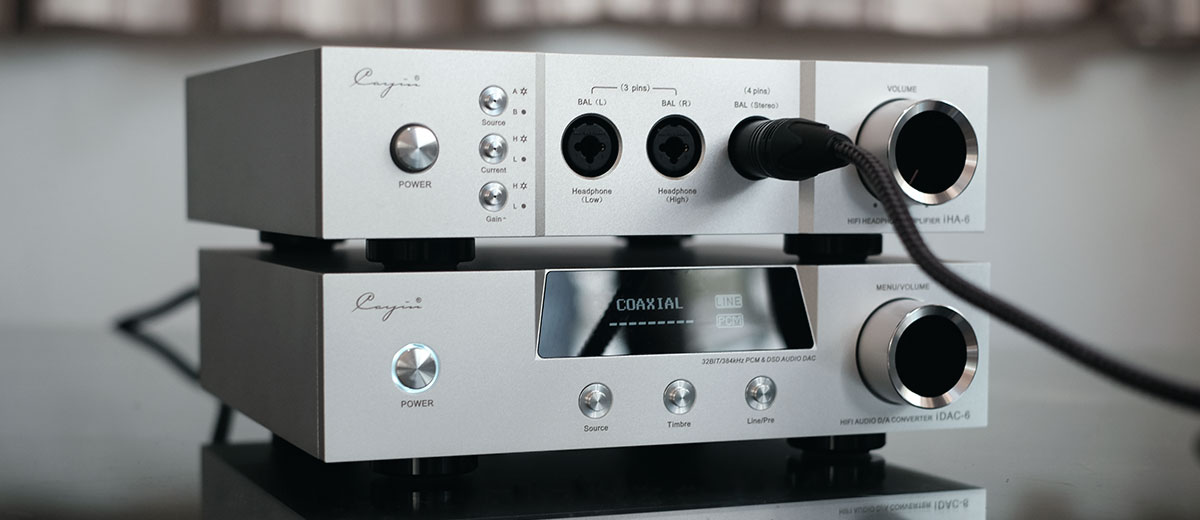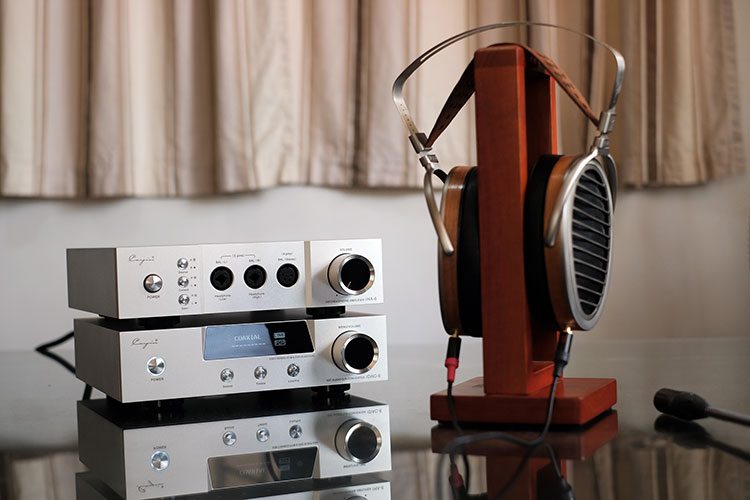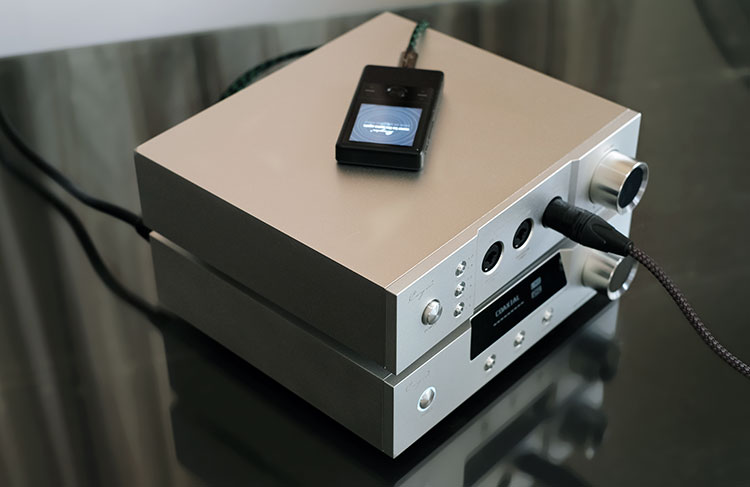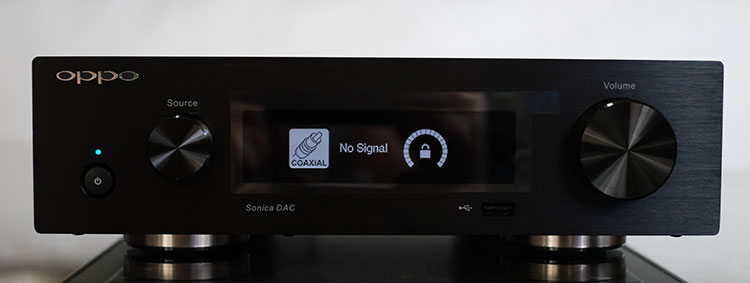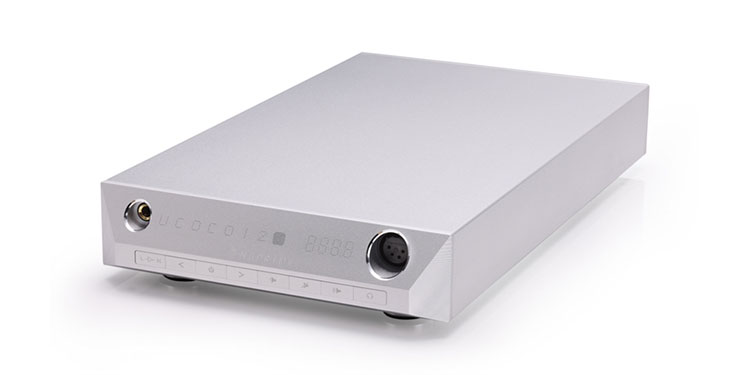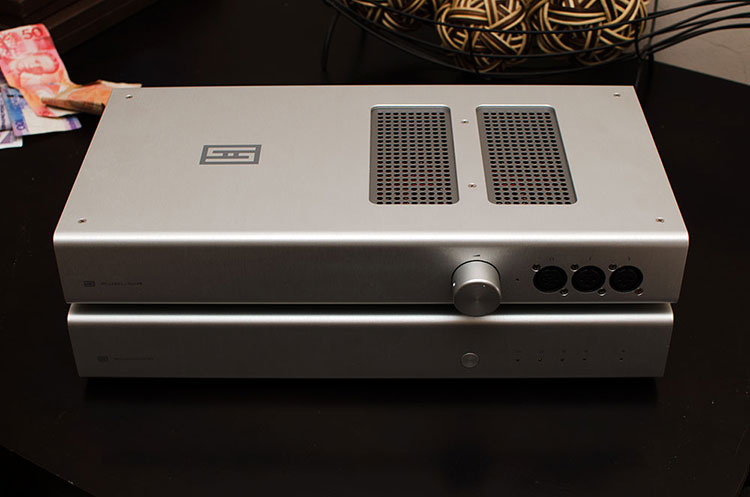Sound Impressions
iDAC-6 Tonality & Presentation
The iDAC-6 tonality has all the hallmarks of a very good AK4990 implementation and is consistent with the house sound Cayin has been promoting these last few years with their portable gear only this is a significant step up in resolution and dynamics.
Musical Quality
The iDAC-6 does not have a decidedly neutral flavor, even in transistor mode it still exudes a slightly more musical quality. This is a subtle difference though and to be honest you could be forgiven for thinking the iDAC-6 is relatively neutral also if you are not comparing DACs side by side to something like the analytical NuPrime DAC-10H. We also reviewed another AK4990 infused DAC, the NuPrime DAC-9 and side by side the iDAC-6 is the more resolving and cleaner of the two but it does draw from a euphoric musicality of the DAC-9 at times in its presentation sounding more expansive and dynamic.
Timbre
We are talking excellent detail retrieval but with a slightly fuller sound and a weightier low-end. The iDAC-6 also exhibits a richer timbre with a bias more to even over odd harmonics giving it a non-fatiguing and relatively natural-sounding performance that pairs well with tougher to drive cans such as the Hifiman HE-6 when connected to the iHA-6 balanced output.
Vocal Control
It may lack some of the micro-detail prowess of the ESS flavored DACs but if you want something a little punchier then the iDAC-6 will give you that. A good example is the voicing when switching from the Oppo Sonica DAC to the iDAC-6 using the iHA-6 amp. I get a more euphoric but slightly edgier and less refined timbre with the iDAC-6. Technically, the Sonica is thus the more accurate for my money but the iDAC-6 is the more engaging and dynamic of the two for vocals so I tend to get more personal pleasure from the iDAC-6 performance with the right amp pairing.
Energy
Treble on the iDAC-6 has a subtle infusion of energy and a slightly forward presentation so it will sound exciting with its contrasting treble sparkle and fuller bass dynamics. The iDAC-6 produces a flurry of lower treble excitement with a very nice snap in percussion reproduction and an ever so slightly laid back final octave. You won’t get anything sharp sounding from the top-end on this DAC but neither will it sound smoothed out.
iHA-6 Tonality & Presentation
The iHA-6 has a relatively clean and transparent tonal quality but with fantastic dynamics and excellent clarity. This is the type of amp I love testing DAC’s with just to pick up on the subtle changes each DAC brings to the tonal flavor because of that level of transparency.
Response
You won’t get the thickest of notes, it is firmly neutral in that respect but you can infuse a bit more richness with a tube DAC. Otherwise, the iHA-6 is firmly in the solid-state camp with a tight and impactful low-end, very resolving, precise and detailed mids reproduction and an articulate treble response. Instrumental layering and imaging are excellent, this is pacey and well-defined sounding signature that benefits complex musical passages and never trips over itself, not once.
Timbre
Timbre is very much to the neutral and accurate side with a distinct lack of coloration. If there is it will come from your headphone or source which is why pairing with the iDAC-6 is ideal since I tend to enjoy its slightly more musical approach.
It may not have the grandiose tube sound of say the Studio 6 or perhaps the total refinement of the Ragnarok but the transparency and power of the iHA-6 make this a very engaging sound.
Matchability
iDAC-6 Amp Pairing
The ideal matchup, physically at least, is the iHA-6 pairing to produce a fully balanced system and a choice of outputs based on impedance, current, gain and the option to connect a headphone in a balanced or unbalanced format.
iHA-6 Synergy
Paired with the iHA-6 I got an impactful and energetic performance with a tight but energetic low-end and a more than satisfactory level of detail. The transparency and resolution of the iHA-6 really allow the iDAC-6 to show off its slightly more musical and impactful signature.
A special mention also for the really low noise levels with this pairing. Even with medium efficiency headphones or 36-ohm loads such as the K812 and K872 I got some excellent low noise performances. Yes, the voltage level on the iHA-6 might be a touch too demanding but opting for the iDAC-6 pre-amp control you can create a bit more volume wiggle room.
Headphone Pairings
Balanced
I couldn’t find much to fault with this pairing in terms of resolution and power but I did find going balanced with this combo to produce the most rewarding performance. Partially because the vacuum stage output in the iDAC-6 has a touch more even harmonics bias than the transistor output in a single-ended mode that smooths out the sound a little more to my preference. Also, the excellent 7W power output of the iHA-6 balanced socket combined with a sub-1-ohm output resistance level makes it super ideal for a very wide range of headphones, particularly planars.
Planars
Big hitters like the Hifiman Susvara sounded beautifully detailed if slightly thinner than I would like whereas the older HE-6 also from Hifiman was lively, musical and easily driven. Much easier to drive planars such as the Ether and LCD-2 had excellent dynamics and a very balanced but engaging signature. There is nothing boring about this desktop combo.
The only area is that slightly neutral solid-state tonal quality being one of a preference thing. I often get that with my old Mark 1 Mjolnir amp with its energetic and dynamic solid-state performance and part of the reason why I have some tube amps as an alternative sound.
Preferences
As a result, I tended to give more playtime with natural-sounding or darker headphones such as the LCD-2 and the Senn HD650 which sounded “alive” with this pairing. By the way, if you feel there isn’t enough “juice” with this pairing double-check if the current and gain mode buttons. With planars high current really upped the fullness in sound with a more vivid presentation and inefficient power-hungry ones such as the HE-6 does need the gain switch on.
Pre-amping
Not to be overlooked is the pre-amping capability of the iDAC-6 when pairing with amps. The AK4990 chipset has been implemented to allow for a measure of digital volume control directly with the iDAC-6. You can also by-pass the pre-amping capability via the onboard menu system instead opting for a direct line out and allow the connect amp to assume full volume control.
This feature is quite similar also to the Oppo Sonica DAC, NuPrime DAC-10 and DAC-9 who also deliver pre-amping capability via digital volume control although the Cayin iDAC-6 seems a little more limited in terms of the usable volume range. On the likes of the DAC-9, which also uses AK4990 implementation, I have a scale of 99 steps in 0.5dB increments. By contrast, I am only getting 32 steps on the iDAC-6 so there is less micro-control for me and more emphasis on fine-tuning via the analog amp pot.
Manual
Like the Sonica DAC, the iDAC-6 also does not have a remote control and unlike the Oppo variant, it cannot be controlled through an app. This is a purely manual operation that makes it less than ideal for volume control, especially if pre-amping into a speaker system and you are resting nicely on that big couch.
Select Comparisons
Oppo Sonica DAC
$799
Amp used: iHA-6
Feature Set
The pricing points of these two are not that far off and as a traditional DAC the iDAC-6 is very competitive with balanced and single-ended outputs, USB and SPDIF inputs, a choice of bypass or variable volume control and even some timbre tweaks that the Sonica DAC does not have.
It is also smaller than the DAC though both have excellent build quality. The OLED screen on the iDAC-6 though is a bit more refined than Sonica’s OLED with smoother graphics. Neither have remote controls.
Modular
The iDAC-6 though is modular and syncs perfectly with the iHA-6 amp and the soon to be released networking module though this will incur higher costs. The Sonica DAC, on the other hand, comes complete with networking and streaming built-in so it does represent a much cheaper entry to the world of wireless networking and can offer more connectivity features than the iDAC-6 currently can.
Decoding Capability
The iDAC-6 deploys a dual-mono mode 32BIT AK4490 Verita DAC chip config as well as a vacuum tube tweak with the option to output to a quad 6N16B miniature tube config which operates as an additional buffer stage.
In comparison, the ES9038Pro chip inside the Sonica DAC is just that bit newer, more expensive, can decode PCM up to 768 kHz 32-bit and up to DSD512 so it is just that bit more capable and future-proofed in comparison to the iDAC-6’s current feature set.
Tonal Preferences
Given the outline in our sound impressions of some of the differences between the two DACs, I found myself preferring certain genres and headphones with the Sonica DAC attached to the iHA-6 compared to the iDAC-6 which has a more flexible genre selection. The balanced but detailed presentation, as well as the neutral-sounding timbre of the Sonica, felt more ‘correct’ with analytical orientated headphones such as the HD800 when paired with the iHA-6. I was not as enamored with the LCD-2 or Ether Flow pairings which lacked a little in terms of musicality.
The micro-detail focus of the Sonica played out well with chamber music, orchestral works and film scores but lacked a little in terms of impact to really hit home on modern rock, pop, and EDM which I felt the iDAC-6 could deliver in tandem with the LCD-2 and Ether Flow.
The iDAC-6’s slightly fuller sound and more forward vocal response just conjured up a little bit more emotion and character in the audio when combined with the iHA-6. Combine that with the ability to tweak the sound emphasis and timbre with the tube output as well as the digital filters the iDAC-6, though not the detail-king, is certainly the matchability king.
NuPrime DAC-10H
$1495
DAC
The DAC-10 is the flagship DAC/Amp from NuPrime with an ES9018s DAC implementation offering similar levels of decoding prowess as the iDAC-6 though topping out slightly higher at DSD256 compared to the iDAC-6’s DSD128 decoding limit. Like the IDAC-6 and iHA-6, the DAC-10 is packed with a non-switching toroidal transformer so its noise levels are very low with independent left-right power channels.
Amp
On the amping side, the iHA-6 is the more versatile amping solution. The DAC-10 has a single unbalanced and single balanced 4-pin XLR output compared to the iHA-6’s 4 output options with low and high impedance single-ended and two balanced output options. Whilst both the iHA-6 and DAC-10H have similar unbalanced power ratings at 2W into 32-ohm loads, the balanced output of the iHA-6 is much more powerful at 7W into 32 ohms compared to the DAC-10H’s 4W rating. This makes the iHA-6 the preferred amp in terms of pure power.
Pre-amping
Although the DAC-10H has it’s only built-in amp it can also DAC out to any analog 3rd part amp or act as a pre-amp in much the same manner as the iDAC-6. I do rate the pre-amping a little bit higher on the DAC-10H with its wider 99 steps 0.5dB incremental volume scale compared to the most limited 32 step scale on the iDAC-6.
Voltage
Voltage output levels on the DAC-10H and iDAC-6 are similar for their single-ended and balanced outputs at 2v and 4v for the DAC-10H and a very slightly higher 2.2 and 4.4 for the iDAC-6. However, unlike the iDAC-6 these are not fixed with the DAC-10H able to switch up to a more powerful 4v and 8v respectively with its dual gain settings.
Tonality
This is a very neutral clean and detailed sounding DAC but unlike other ES9018s DACs such as the Oppo HA-1, it doesn’t sound as thin or peaky in the lower treble. It lacks the lower treble Sabre glare that some DACs suffer with. It is incredibly transparent in that respect with plenty of analytical prowess for those audiophiles who like to hear a ton of detail in their recordings without any additional coloration.
By comparison, the iDAC-6 does indeed sounds a bit more musical with a smoother though slightly less detailed sound. The iDAC-6 in its pairing with the iHA-6 also has a slightly weightier bass response and a fuller sound but a little less resolving by comparison. Dynamic range is just a little muted on the iDAC-6 compared to the DAC-10h’s DAC component but in terms of amping, I find the iHA-6 to have a better dynamic capability particularly in balanced mode.
The DAC-10H is the better performer for additional micro detail and pre-amping capabilities but I do find the Cayin combo to be the more forgiving and powerful of the two and tonally it plays better with a wider range of headphones.
Schiit Gungnir (MK1)
$849
Amp used: iHA-6
DAC Capability
It is getting a bit long in the tooth with the release of the multi-bit Gungnir v2 but I still use the Gungnir v1 and price wise when it came out it was still in the same ballpark as the iDAC-6 The Gungnir uses dual AKM4399 chips in its design, which is a 32-bit, delta-sigma D/A and similar to those used in the Bryston BDA-2, though Schiit did not set up the Gungnir to be DSD capable. Schiit are not DSD fans by the way and even the Yggy lacks DSD compatibility. For that, you have to grab the additional Loki and even then it tops out at DSD64.
Tonality
The Gungnir tonally is a more neutral and aggressive sounding DAC than the smoother iDAC-9. It doesn’t have the clear pure tones of the DAC-10H and perhaps not as transparent but it’s more visceral and aggressive than the iDAC-9.
Matching
Headphones like the LCD-2 Rev 2 benefit greatly from this aggressive presentation whereas the iDAC-6’s musical and smoother approach might not get the best out of this planars darker low end and shelved down treble unless paired with the iHA-6. The downside is the Gungnir can fatigue a little more than the iDAC-9, especially if paired with the Mjolnir which in itself is a very dynamic amp.
Our Verdict
This is a sum of the parts feeling with the iDAC-6 DAC and iHA-6 amp. Apart they are impressive, competitively priced with good specs and well-put-together desktop components. I could happily use either with perhaps the iHA-6 being the more immediately impressive of the two. Together, however, they are outstanding as a system which is how Cayin really wanted these units to be used.
As a sub $2000 complete desktop solution it beats out the NuPrime DAC-10H for power and outclasses the DAC-9 for detail. I prefer it over the mark 1 Gungnir, it’s not quite as aggressive sounding but it sounds less fatiguing. The Oppo Sonica DAC might have the better detail levels but its neutrality might bore some compared to the more musical sound of the Cayin combo.
The really cool thing though is we are not done just yet. Their up and coming iDAP unit will make this a modern triple stack and the only thing missing, (something which the Oppo Sonica DAC has them licked on as of now), will be addressed and that is network streaming.
Of course, the pennies add up and a triple stack, even with the additional transparency and power of the iHA-6 will push this well over two grand. However, the modular approach will reduce the risk. If you don’t like the networking aspect you do not have to get the iDAP, if you just want a traditional DAC you can get just the iDAC-6 or if you want the most impressive component of all, the very transparent and powerful ihA-6 amp only then there is that also. It is a very flexible product road map and has something for everyone wanting to go desktop.

